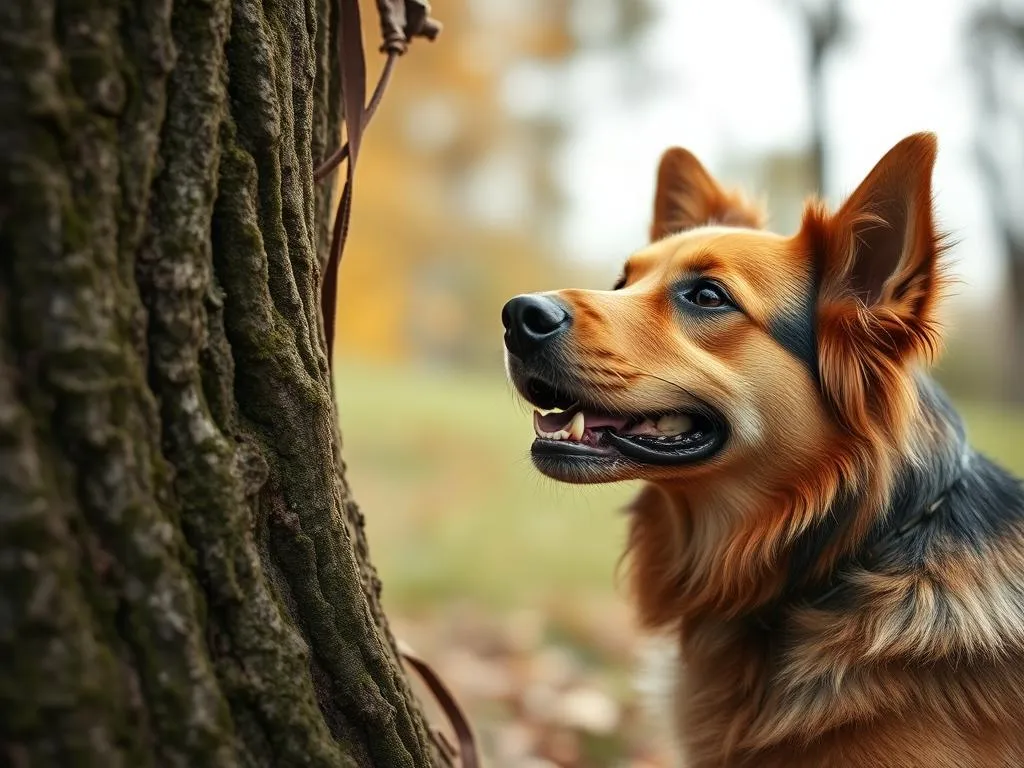
Understanding why dogs engage in certain behaviors can deepen our bond with our furry friends. One of the most common yet perplexing sights for dog owners is their pets peeing on trees. This behavior raises questions about canine instincts, communication, and environmental factors. In this article, we’ll delve into the fascinating reasons behind this behavior and what it reveals about our canine companions.
Understanding Canine Behavior
The Instinctual Nature of Dogs
Dogs are descendants of wolves, and much of their behavior is rooted in instinct. Just like their wild ancestors, domestic dogs retain certain territorial and social behaviors that dictate their actions. Understanding these instinctual behaviors can shed light on why dogs engage in activities like peeing on trees.
Communication Through Urination
Dogs communicate in various ways, and one of the most prominent methods is through urination. When a dog pees, it leaves behind not just liquid but a wealth of information for other canines. Each dog’s urine contains unique chemical markers, allowing them to convey messages about their identity, health, and territorial boundaries. This form of communication is crucial in establishing social structures among dogs.
Reasons Why Dogs Pee on Trees
Territory Marking
One of the primary reasons dogs pee on trees is to mark their territory. This behavior is deeply ingrained in their instincts. By urinating on a tree, a dog is claiming that space as its own. The scent left behind serves as a warning to other dogs that this area is occupied, establishing dominance and asserting presence.
Social Interaction
In addition to marking territory, urination functions as a social signal among dogs. When one dog sniffs another’s urine, it gathers information about that dog’s age, sexual status, and even mood. This can help determine whether they want to engage in play or avoid confrontation. The presence of pheromones in urine amplifies this communication, making it a vital social tool for dogs.
Instinctual Behaviors from Ancestral Roots
The act of marking territory through urination isn’t unique to dogs. Many animals, including cats and various mammals, exhibit similar behaviors. Dogs have inherited this instinct from their ancestors, who relied on scent marking to communicate and navigate their environment. This connection to their wild roots is a fascinating aspect of canine behavior.
Health and Hydration Factors
While territorial marking and social interaction are primary reasons dogs might pee on trees, health and hydration play a significant role as well. A dog’s hydration level can influence how often it needs to urinate. If a dog is well-hydrated, it will likely urinate more frequently. Conversely, dehydration can lead to less frequent urination, which can be a sign of health issues.
Environmental Factors Influencing Urination
The Role of Trees in the Environment
Dogs are particularly drawn to trees for various reasons. The texture and scent of trees can be appealing to dogs, providing a rich sensory experience. Trees offer a higher vantage point for scent detection, allowing dogs to gather information about their surroundings more effectively. The natural fibers and moisture of trees may also enhance the scent markers left behind.
Urban vs. Rural Settings
The environment plays a crucial role in how dogs display their urination behaviors. In urban settings, where trees may be sparse, dogs might resort to other surfaces like lampposts or fire hydrants. In contrast, rural areas with abundant trees allow dogs more opportunities to engage in their instinctual marking behavior. Urbanization has influenced canine marking behavior, leading to adaptations based on available surfaces.
Training and Behavior Modification
Understanding Your Dog’s Urination Patterns
To manage your dog’s urination behavior effectively, it’s essential to observe their habits. Pay attention to where and when your dog tends to pee. Understanding these patterns can provide insights into their needs and help you anticipate their behavior during walks or outings.
Training Techniques to Manage Urination
If urination on trees becomes excessive or problematic, there are several training techniques you can employ to redirect this behavior. Positive reinforcement strategies can be effective. For instance, if your dog begins to pee in an undesirable location, gently redirect them to a more appropriate spot and reward them when they comply. Consistency is key—over time, your dog will learn to associate certain areas with acceptable urination.
When to Seek Professional Help
In some cases, urination behavior may signal underlying issues. If your dog’s urination becomes more frequent than usual or seems compulsive, it may be time to consult a veterinarian or professional dog trainer. They can help identify any health concerns or behavioral issues that need to be addressed.
Health Considerations Related to Urination
Common Health Issues
Certain health problems can affect a dog’s urination habits, making it essential to stay vigilant. Conditions such as urinary tract infections, diabetes, or kidney issues may lead to increased urination or accidents in the house. Regular veterinary check-ups are crucial for maintaining your dog’s health and catching any potential issues early.
Diet and Urination
Diet also plays a significant role in a dog’s urination habits. A high-salt diet can lead to increased thirst, resulting in more frequent urination. Conversely, a well-balanced diet can support healthy urinary function. If you notice changes in your dog’s urination patterns, consider evaluating their diet and discussing any necessary changes with your veterinarian.
Conclusion
Understanding why dogs pee on trees involves a mixture of instinctual behavior, communication, social interaction, and environmental influences. By observing your dog’s habits and acknowledging the reasons behind their actions, you can foster a deeper relationship with them. Whether it’s marking territory, socializing with other dogs, or simply enjoying their environment, urination is a natural part of canine behavior. Embracing and appreciating these instincts not only enhances your bond but also helps you become a more informed and responsible dog owner.
FAQs
Why does my dog pee on every tree we pass?
Dogs often pee on trees to gather information about their surroundings and to communicate with other dogs. This behavior is instinctual and serves to mark territory and socialize.
Is it normal for dogs to pee multiple times during a walk?
Yes, it’s normal for dogs to pee multiple times during a walk, especially if they are excited or have been well-hydrated. Frequent urination can also serve as a way to mark territory.
How can I stop my dog from peeing on trees?
To manage this behavior, consider training techniques such as redirecting your dog to appropriate areas to urinate and using positive reinforcement. Consistency is important in modifying their behavior.
Should I worry if my dog is peeing more than usual?
If your dog is urinating more frequently than usual, it could indicate a health issue. Consult your veterinarian for a thorough check-up to rule out any underlying problems.









